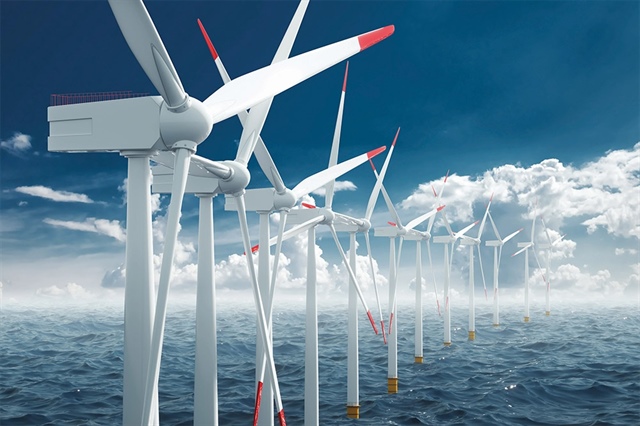New proposals built in hope of pushing offshore wind
New proposals built in hope of pushing offshore wind
Foreign investors participating in offshore wind power in Vietnam must have previously implemented at least one similar venture of equivalent scale, according to new proposals.
This was the main point in the Ministry of Industry and Trade’s (MoIT) draft decree last week, detailing a number of articles of the Electricity Law on renewable energy and electricity.
Under the draft, for foreign investors implementing offshore wind (OSW) power projects, it is recommended that they have implemented at least one initiative of equivalent scale either in Vietnam or elsewhere, and have a total audited net asset value in the last three years greater than the total expected investment.

Vietnam wants only experienced developers in the offshore wind power spacePhoto: Shutterstock |
At the same time, the potential undertakings in Vietnam must have the participation of domestic enterprises, with the condition that foreign investors’ capital contribution does not exceed 65 per cent of the charter capital of the joint venture.
Vietnamese enterprises implementing OSW power must have financial capacity, capital mobilisation plan or loan commitment, personnel, expertise, and experience to implement it.
According to the Power Development Plan VIII (PDP8), Vietnam aims to reach 6,000MW of OSW power by 2030, and 30,000-50,000MW by 2050, becoming a centre for OSW power production in Southeast Asia. Vietnam currently has no such initiatives in operation.
To encourage the development of this power source, the MoIT proposes that OSW power projects be exempted from fees for using sea areas during construction; and 50 per cent reduction in fees for using sea areas within 12 years from the date of operation. They could also be exempted from land use fees and land rent during construction, and then continue to be exempted according to regulations on investment and land.
In a previous interview with VIR, Stuart Livesey, chief representative of Copenhagen Infrastructure Partners in Vietnam, expected a pilot mechanism to be issued towards the end of 2024, allowing state-owned enterprises to cooperate with foreign investors to develop the first OSW schemes in Vietnam.
However, he added that Vietnam should not expect a complete legal system for OSW right from the start.
“Many other markets have instigated a special mechanism to allow new energy industries to commence. It would be useful for Vietnam to initially utilise a flexible legal system that can evolve based on the progress and implementation of pilots, which is quite similar to how Vietnam’s oil and gas industry began at its early stages,” he said.
Prime Minister Pham Minh Chinh on December 12 said at a conference that the government strives to solve problems facing renewable energy by the end of January 2025.
According to the conclusion of the government Inspectorate on the management and investment in construction of power according to PDP8 released last year, 14 solar power ventures in the south-central province of Ninh Thuan are entitled to the feed-in tariff (FiT) price mechanism.
Over 170 grid-connected solar and wind power plants were also recognised for commercial operation to date, and enjoy the FiT price without having the competent state agency issue a document approving the results. Meanwhile, 20 projects overlap with mineral planning, and five overlap with irrigation planning and irrigation areas such. There is currently one scheme overlapping with national defence land planning, and 40 have incorrect procedures and land records.



























